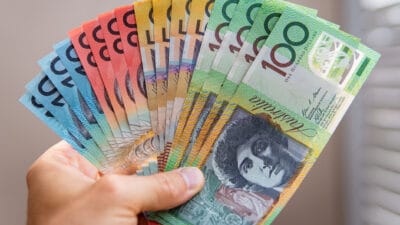One of the few pleasant aspects of the rapid rise in inflation and interest rates we have seen over the past 12 months is the higher interest rates we can enjoy on our savings accounts and term deposits at the bank.
It was only a little more than a year ago that it was hard to find a savings account with an interest rate above 1%. Today, those same rates are closing in on 5%.
So you might get a real kick out of seeing a decent return on your cash, with the only effort required leaving it in the bank and not spending it.
It can even be tempting to think that you are actually investing by seeing the interest from these cash investments roll in every month.
But these cash instruments are no real investments. Want proof? Well, the latest consumer price index (CPI) data from the Australian Bureau of Statistics (ABS) showed that inflation in the Australian economy was running at 7.4% in the year to January 2023.
That means that anything yielding under this threshold is actually losing you money in real terms. So while your cash might be gaining 5% every year, it is simultaneously losing 7.4% of its purchasing power.
As such, in real terms, cash in the bank is losing 2.4% every year. And that's if you have a top-tier rate of 5%.
So if you want a real investment, cash is certainly not king – you'd better look to other assets.
Shares and property both have the potential to beat inflation. But let's stick to shares because the results are easier to quantify. You don't need to be Warren Buffett to nab yourself inflation-beating returns with shares. In fact, all you would have needed in recent years are simple index funds.
Beating inflation with ASX shares
Take a popular ASX index found in the iShares Core S&P/ASX 200 ETF (ASX: IOZ). This is a very simple investment but represents the largest 200 shares on the ASX.
Over the past three years, this exchange-traded fund (ETF) has averaged an annual return of 7.87% (as of 28 February). Over the past five years, this stretches to 7.79% per annum. That's assuming dividends were reinvested, of course.
Not only would that have beaten inflation over the past 12 months, but also have given investors some very decent real returns in the years before 2022 when inflation was running far lower than it is today.
An index fund like the iShares S&P 500 ETF (ASX: IVV) that covers US shares would have done even better.
This ETF has averaged a return of 10.23% per annum over the past three years, and 12.7% over the past five. In fact, its returns stretch to a whopping 16.82% per annum over the past ten years. That well-and-truly crushes inflation. And again, this ETF is a very simple investment, with only one ticker code.
So you don't need to be a genius to invest in inflation-beating assets. You just need to find the right ones.









